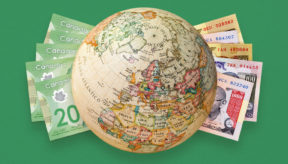Whether you are a foreign worker, permanent resident or an international student, one of the first things to understand is how banking works in Canada!
Many of you are wondering, what is the best bank in Canada for immigrants? The answer depends on your situation. There are tons of bank promotions in Canada. Some offer free banking, but this option is only available for the first year. Expect to pay monthly fees after that.
With this information in mind, how do you go about finding the best bank offers in Canada? How does Canada’s banking system work?
Type of Bank Account
Firstly, determine the type of bank account you want to open since most banks offer a variety of chequing accounts and savings accounts. You will probably want one chequing and one savings account.
What is the difference between a chequing account and a savings account?
Chequing Account: This is used to manage your everyday spending such as shopping, cash withdrawals, and bill payments. Chequing accounts usually have fees, but sometimes these are waived for the first 12 months.
Savings Account: This is ideal for storing money that you do not plan to use regularly. For example, this money may be put away to save for a family trip or a downpayment on a house. When you place money into this savings account, your money will grow by earning interest. However, if you urgently require the money, you can take it out easily. For more information on savings accounts, read Investing vs. Saving.
Direct Deposit
Automatically deposit money into your account through Direct Deposit. For example, this can be used to have an employer direct deposit your payroll right into your bank account. This means you no longer need to wait for pay cheques or make trips to the bank branch and use their ATM machine.
You can also use Direct Deposit for the Canada Child Benefit (CCB), any provincial and territorial payments, the Canada Workers Benefit, overpayment of tax, income tax refund, Canada Recovery Sickness Benefit, Canada Recovery Caregiving Benefit, Canada Recovery Benefit, and goods/services tax credit.
Paying Bills
Instruct your billing company to set up pre-authorized payments (known as PAPs) to automatically remove money from your account for regularly recurring expenses such as bills. This will keep you from forgetting to make the payment or paying it late, which will cost you in interest.
Also, you can set up pre-authorized debits (known as PADs) as another way of paying bills on a routine basis. This can be great for making mortgage, insurance and utility payments.
I Have a Bank Account in Canada. Now How Do I Access My Money?
Retrieving your money is easy. When you open a bank account, you receive a bank card. In Canada, this is known as a debit card and it comes with a Personal Identification Number (PIN) that you can choose. You use this card to pay for things by removing your money from your bank account to pay off bills, expenses, and more. Additionally, you can use this card to take out cash withdrawals at your bank’s branch or by accessing their ATM machines.
Summary
In Canada, you will need a Canadian bank account to manage your daily expenses. This also helps you to save for or invest in your future. Canadian banks are secured and governed by the Bank Act of Canada, so the Canada Deposit Insurance Corporation (CDIC) insures up to $100,000 of your money when it is kept in a Canadian bank account. So you know that your money will be safe.
*Opinions expressed are those of the author, and not necessarily those of Student Life Network or their partners.




